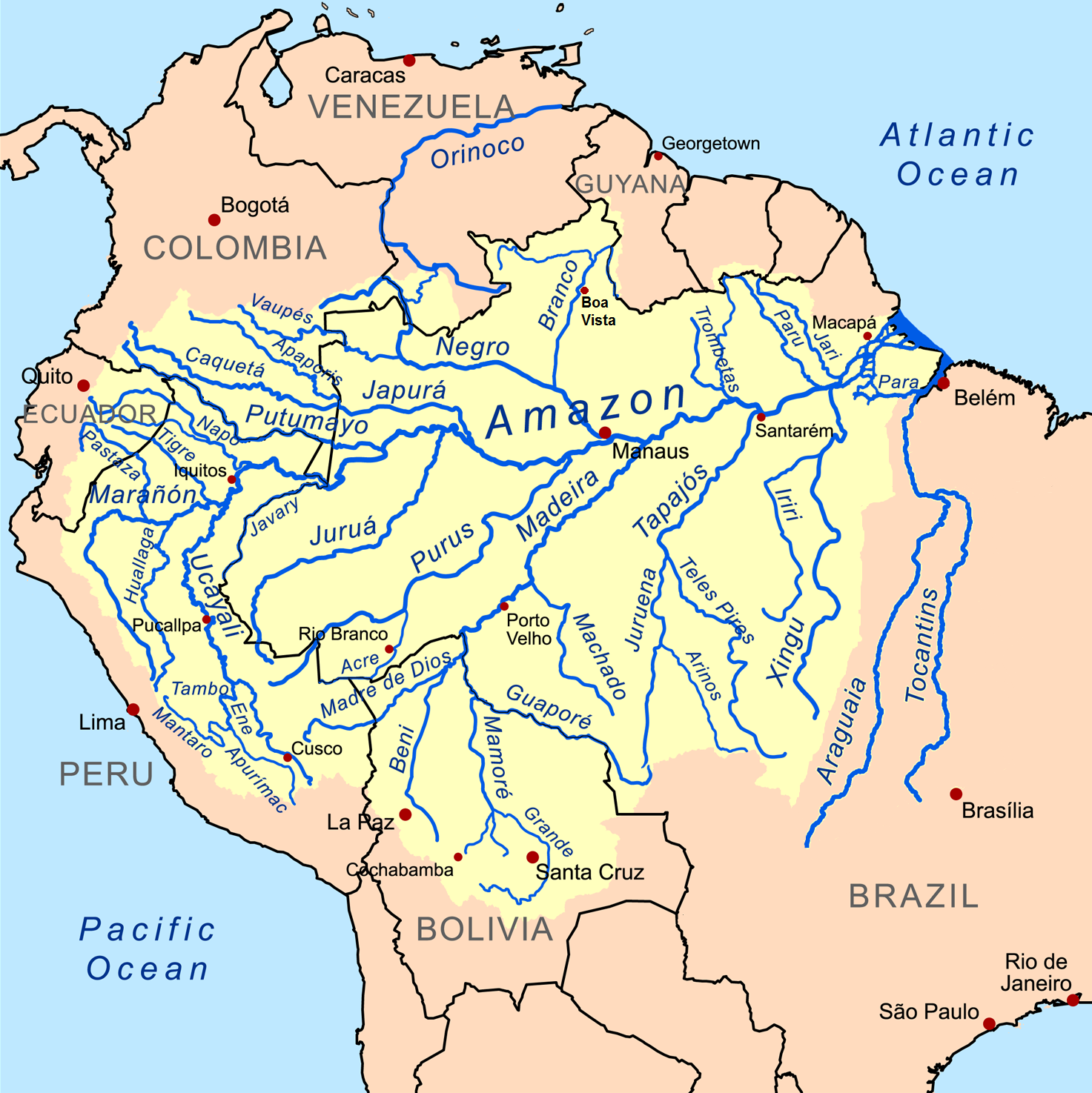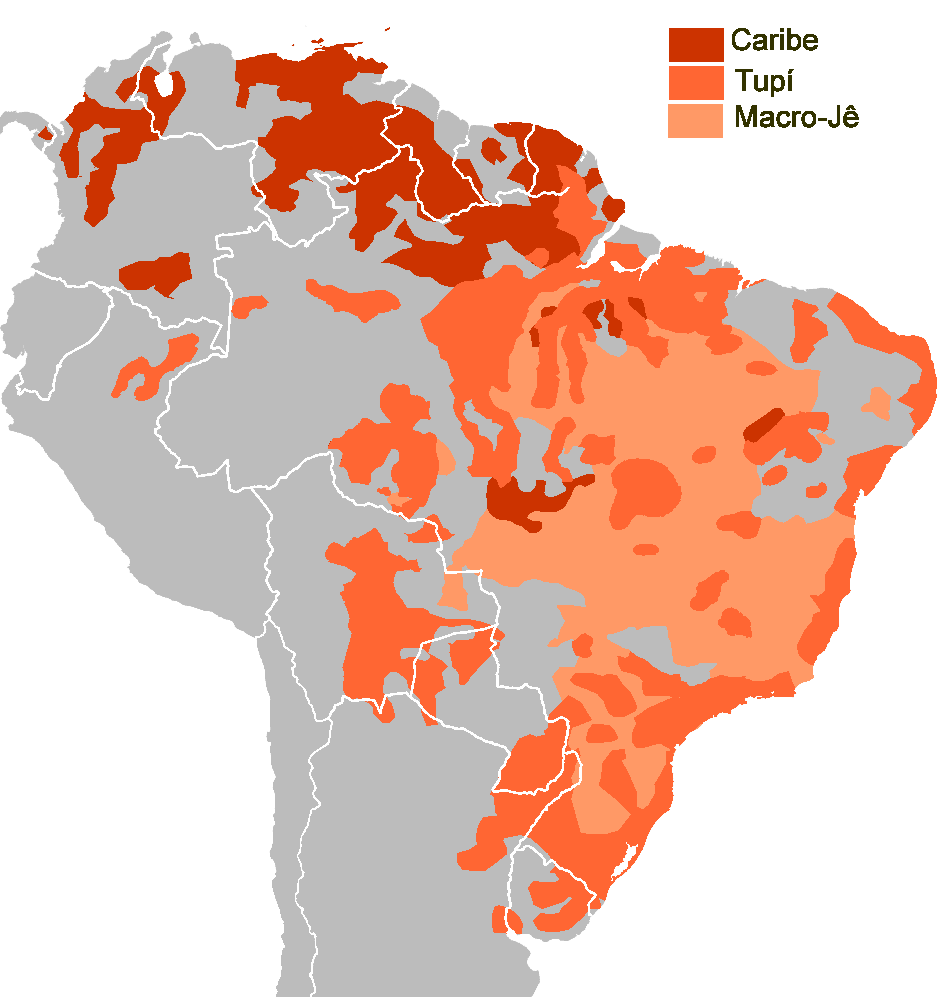|
Maní (Amazonian Legend)
Maní, a Tupí myth of origins, is the name of an indigenous girl with very fair complexion. The Amazonian legend of Maní is related to the cult of Manioc ''Manihot esculenta'', common name, commonly called cassava, manioc, or yuca (among numerous regional names), is a woody shrub of the spurge family, Euphorbiaceae, native to South America, from Brazil, Paraguay and parts of the Andes. Although ..., the native staple food that sprang from her grave. The legend The daughter of a Tupí chief became pregnant. Her father wanted to take revenge on the man who brought shame to his family and dishonour to his pride despite her saying that she had known no man. He insisted that she revealed the name of the man and even made use of prayers, threats and finally severe punishments. As she refused to say, her father held her prisoner inside a hut and decided to kill her. So with this thought in mind the chief of the tribe went to sleep and dreamed of a white-skinned man dressed like ... [...More Info...] [...Related Items...] OR: [Wikipedia] [Google] [Baidu] |
Tupí People
The Tupi people, a subdivision of the Tupi-Guarani linguistic families, were one of the largest groups of indigenous peoples in Brazil before its colonization. Scholars believe that while they first settled in the Amazon rainforest, from about 2,900 years ago the Tupi started to migrate southward and gradually occupied the Atlantic coast of Southeast Brazil. Many Tupi people today are merged with the Guaraní people, forming the Tupi–Guarani languages. The Guarani languages are a subdivision of the Tupian languages. History The Tupi people inhabited 3/4 of all of Brazil's coast when the Portuguese first arrived there. In 1500, their population was estimated at 1 million people, nearly equal to the population of Portugal at the time. They were divided into tribes, each tribe numbering from 300 to 2,000 people. Some examples of these tribes are: '' Tupiniquim'', '' Tupinambá'', ''Potiguara'', '' Tabajara'', '' Caetés'', ''Temiminó'', ''Tamoios''. The Tupi were adept ... [...More Info...] [...Related Items...] OR: [Wikipedia] [Google] [Baidu] |
Myth Of Origins
An origin myth is a type of myth that explains the beginnings of a natural or social aspect of the world. Creation myths are a type of origin myth narrating the formation of the universe. However, numerous cultures have stories that take place after the initial origin. These stories aim to explain the origins of natural phenomena or human institutions within an already existing world. In Greco-Roman scholarship, the terms founding myth or etiological myth (from 'cause') are occasionally used to describe a myth that clarifies an origin, particularly how an object or custom came into existence. In modern political discourse the terms "founding myth", "foundational myth", etc. are often used as critical references to official or widely accepted narratives about the origins or early history of a nation, a society, a culture, etc. Nature of origin myths Origin myths are narratives that explain how a particular reality came into existence.Eliade 1963, p. 21 They often serve to ... [...More Info...] [...Related Items...] OR: [Wikipedia] [Google] [Baidu] |
Amazon Basin
The Amazon basin is the part of South America drained by the Amazon River and its tributary, tributaries. The Amazon drainage basin covers an area of about , or about 35.5 percent of the South American continent. It is located in the countries of Bolivia, Brazil, Colombia, Ecuador, Guyana, Peru, Suriname, and Venezuela, as well as the territory of French Guiana. Most of the basin is covered by the Amazon rainforest, also known as Amazon rainforest, Amazonia. With a area of dense tropical forest, it is the largest rainforest in the world. Geography The Amazon River begins in the Andes, Andes Mountains at the west of the basin with its main tributary the Marañón River and Apurímac River, Apurimac River in Peru. The highest point in the Drainage divide, watershed of the Amazon is the second biggest peak of Yerupajá at . The Amazon River Basin occupies the entire central and eastern area of South America, lying to the east of the Andes mountain range and extending from th ... [...More Info...] [...Related Items...] OR: [Wikipedia] [Google] [Baidu] |
Legend
A legend is a genre of folklore that consists of a narrative featuring human actions, believed or perceived to have taken place in human history. Narratives in this genre may demonstrate human values, and possess certain qualities that give the tale verisimilitude (literature), verisimilitude. Legend, for its active and passive participants, may include miracles. Legends may be transformed over time to keep them fresh and vital. Many legends operate within the realm of uncertainty, never being entirely believed by the participants, but also never being resolutely doubted. Legends are sometimes distinguished from myths in that they concern human beings as the main characters and do not necessarily have supernatural origins, and sometimes in that they have some sort of historical basis whereas myths generally do not. The Brothers Grimm defined ''legend'' as "Folklore, folktale historically grounded". A by-product of the "concern with human beings" is the long list of legendary crea ... [...More Info...] [...Related Items...] OR: [Wikipedia] [Google] [Baidu] |
Cassava
''Manihot esculenta'', common name, commonly called cassava, manioc, or yuca (among numerous regional names), is a woody shrub of the spurge family, Euphorbiaceae, native to South America, from Brazil, Paraguay and parts of the Andes. Although a perennial plant, cassava is extensively cultivated in tropical and subtropical regions as an annual crop for its edible starchy tuberous root. Cassava is predominantly consumed in boiled form, but substantial quantities are processed to extract cassava starch, called tapioca, which is used for food, animal feed, and industrial purposes. The Brazilian , and the related ''garri'' of West Africa, is an edible coarse flour obtained by grating cassava roots, pressing moisture off the obtained grated pulp, and finally drying it (and roasting in the case of both and ''garri''). Cassava is the third-largest source of carbohydrates in food in the tropics, after rice and maize, making it an important staple food, staple; more than 500 million pe ... [...More Info...] [...Related Items...] OR: [Wikipedia] [Google] [Baidu] |
Tupi–Guarani Languages
Tupi–Guarani (/tuːˈpiː ɡwɑˈrɑːni/ /ɡwɑˈɾɑ-/; Tupi-Guarani: uˈpi ɡwaɾaˈni ) is the most widely distributed subfamily of the Tupian languages of South America. It consists of about fifty languages, including Guarani and Old Tupi. The most widely spoken in modern times by far is Guarani, which is one of the two official languages of Paraguay. The words '' petunia, jaguar, piranha, ipecac, tapioca, jacaranda, anhinga, carioca'', and ''capoeira'' are of Tupi–Guarani origin. Classification Rodrigues & Cabral (2012) Rodrigues & Cabral (2012) propose eight branches of Tupí–Guaraní: * Tupí–Guaraní ** Guaraní (Group I) ** Guarayu (Group II): Guarayu, Pauserna**, Sirionó (dialects: Yuqui, Jorá**) ** Tupí (Group III): Old Tupi (lingua franca dialect: Tupí Austral), Tupinambá (dialects: Nheengatu, Língua Geral as lingua franca, and Potiguára), Cocama– Omagua*, Tupinikin** ** Tenetehara (Group IV): Akwáwa (dialects: Asurin ... [...More Info...] [...Related Items...] OR: [Wikipedia] [Google] [Baidu] |
Albinism
Albinism is the congenital absence of melanin in an animal or plant resulting in white hair, feathers, scales and skin and reddish pink or blue eyes. Individuals with the condition are referred to as albinos. Varied use and interpretation of the terms mean that written reports of albinistic animals can be difficult to verify. Albinism can reduce the survivability of an animal; for example, it has been suggested that albino alligators have an average survival span of only 24 hours due to the lack of protection from UV radiation and their lack of camouflage to avoid predators. It is a common misconception that all albino animals have characteristic pink or red eyes (resulting from the lack of pigment in the Iris (anatomy), iris allowing the blood vessels of the retina to be visible); this is not the case for some forms of albinism. Familiar albino animals include in-bred strains of laboratory animals (rats, mice and rabbits), but populations of naturally occurring albino animals ... [...More Info...] [...Related Items...] OR: [Wikipedia] [Google] [Baidu] |
Brazilian Mythology
Brazilian mythology is a rich and diverse part of Brazilian folklore with cultural elements, comprising folk tales, traditions, characters, and beliefs. The category is representative of Brazil’s greater culture, being a melting pot of Iberic traditions brought by the Portuguese settlers, African traditions brought by Africans during the colonial slave trade, and the traditions and stories of indigenous groups that have occupied Brazil for centuries. Because Brazil is a melting pot of cultures, many elements of Brazilian mythology are shared by the traditions of other countries, especially its South American neighbors and Portugal. There is no singular mythological doctrine in Brazil; instead, there is a patchwork collection of stories and teachings from different cultural groups that each contribute unique stories, teachings, and figures to the overall mythology of Brazil. The mythology of Brazil, especially that of the local indigenous groups, has largely been kept alive th ... [...More Info...] [...Related Items...] OR: [Wikipedia] [Google] [Baidu] |
Hainuwele
Hainuwele, "The Coconut Girl", is a figure from the Wemale and Alune folklore of the island of Seram in the Maluku Islands, Indonesia. Her story is an origin myth. The myth of Hainuwele was recorded by German ethnologist Adolf E. Jensen following the Frobenius Institute's 1937–38 expedition to the Maluku Islands. The study of this myth during his research on religious sacrifice led Jensen to the introduction of the concept of Dema Deity in ethnology. Joseph Campbell first narrated the Hainuwele legend to an English-speaking audience in his work '' The Masks of God''. Myth While hunting one day a man named Ameta found a coconut, something never before seen on Seram, that had been caught in the tusk of a wild boar. Ameta, who was part of one of the original nine families of the West Ceram people who had emerged from bananas, took the coconut home. That night, a figure appeared in a dream and instructed him to plant the coconut. Ameta did so, and in just a few days ... [...More Info...] [...Related Items...] OR: [Wikipedia] [Google] [Baidu] |
Tupinambá People
The Tupinambá ( Tupinambás) are one of the various Tupi ethnic groups that inhabit present-day Brazil, and who had been living there long before the conquest of the region by Portuguese colonial settlers. The name Tupinambá was also applied to other Tupi-speaking groups, such as the Tupiniquim, Potiguara, Tupinambá, Temiminó, Caeté, Tabajara, Tamoio, and Tupinaé, among others. Before and during their first contact with the Portuguese, the Tupinambás had been living along the entire Eastern Atlantic coast of Brazil. In a sense, the name can be applied exclusively to the Tupinambás who once-inhabited the right shore of the São Francisco River (in the Recôncavo Baiano, Bahia), and from the Cabo de São Tomé (in Rio de Janeiro) to the town of São Sebastião (in São Paulo). Their language survives today in the form of Nheengatu. In the 21st century, the Tupinambá people live in Pará, and the southern region of Bahia, around Olivença, Alagoas. The Tupinamb� ... [...More Info...] [...Related Items...] OR: [Wikipedia] [Google] [Baidu] |
Amazon Mythology
Amazon most often refers to: * Amazon River, in South America * Amazon rainforest, a rainforest covering most of the Amazon basin * Amazon (company), an American multinational technology company * Amazons, a tribe of female warriors in Greek mythology Amazon or Amazone may also refer to: Arts and entertainment Fictional characters * Amazon (Amalgam Comics) * Amazon, an alias of the Marvel supervillain Man-Killer * Amazons (DC Comics), a group of superhuman characters * The Amazon, a ''Diablo II'' character * The Amazon, a ''Pro Wrestling'' character * Amazon (''Dragon's Crown''), a character from the ''Dragon's Crown'' game * ''Kamen Rider Amazon'', title character in the fourth installment of the ''Kamen Rider'' series Film and television * ''The Amazons'' (1917 film), an American silent tragedy film * ''The Amazon'' (film), a 1921 German silent film * ''War Goddess'', also known as ''The Amazons'', a 1973 Italian adventure fantasy drama * ''Amazons'' (1984 film), an ... [...More Info...] [...Related Items...] OR: [Wikipedia] [Google] [Baidu] |






